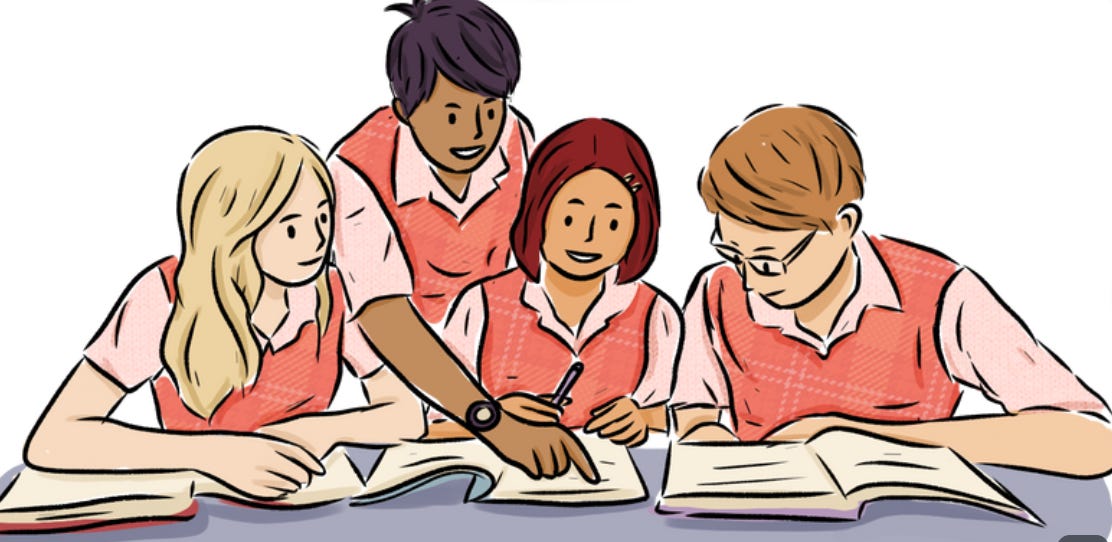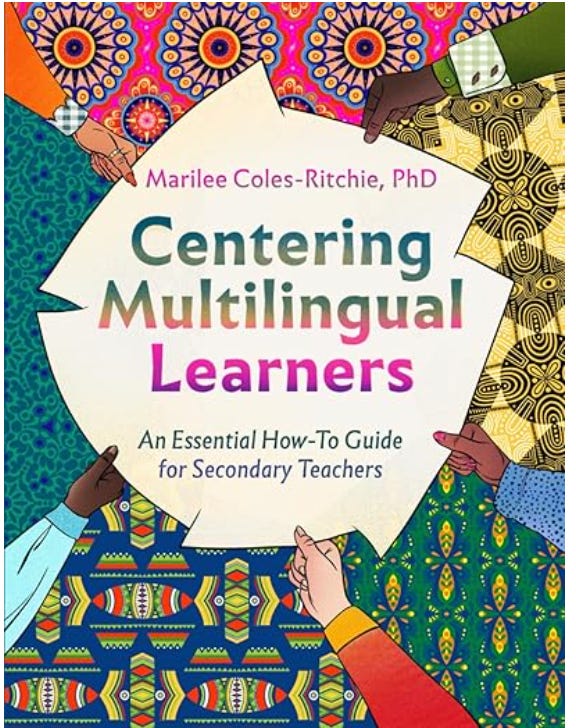Creating belonging for Multilingual Learners in your classes goes beyond the initial welcoming, learning names, and designing a multicultural physical space. This is all foundational but it shouldn’t stop there.
I am sharing how you can construct the body of your lessons—the how you teach that can create meaning-making and connection to content so your MLs feel like they belong and what they say matters to the group.
Here are three concrete ways content-area secondary teachers can foster belonging for Multilingual Learners (MLs) within their lesson plans:
Opportunities for Collaboration
Example 1: During a science lab, create mixed-ability groups with clear roles (e.g., recorder, presenter, experimenter). Provide role cards with visuals to explain each responsibility, ensuring MLs can contribute meaningfully.
Example 2: In history class, assign a collaborative project where students create a timeline of events. Allow MLs to add events from their home countries or cultural histories to the timeline, enriching the content for everyone. They can also find out material in their home languages.
Example 3: Use structured peer discussions, such as “Think-Pair-Share.” Provide sentence frames like:
“I think this is important because…”
“What do you think about…?”
Provide Visual Scaffolds
Example 1: In math, use step-by-step visual guides (e.g., diagrams or color-coded examples) to explain problem-solving methods. For instance, highlight key terms like add, subtract, or total in both English and the student’s home language if possible.
Example 2: Provide sentence starters or paragraph frames with graphics (google is your friend) for writing assignments in language arts or social studies classes. For example:
“The main idea of this text is…”
“One reason this is important is because…”
Example 3: Use bilingual glossaries or online translation tools for vocabulary-heavy subjects. Pair these with images or physical objects (e.g., a labeled model of the solar system for astronomy).
Consistently Highlight Student Strengths
Example 1: In group discussions, acknowledge unique contributions by MLs, such as their perspectives on a global topic or creative problem-solving. For example, say:
“That’s a great connection to what we learned last week—thank you for sharing!”
Example 2: During feedback on writing, highlight progress by underlining effective sentences or strong ideas, even if grammar or vocabulary needs improvement. Provide constructive suggestions framed as goals:
“You used a great example here! Let’s work on making your verbs more precise next time.”
Find out more ideas in my newly published book!
Get it here.

How have you created lessons to involve MLs?






